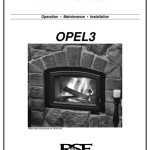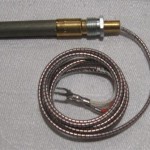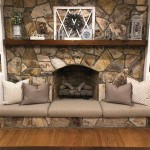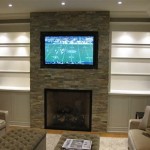LP Gas Outdoor Fireplace Won’t Light: Troubleshooting and Solutions
An LP gas outdoor fireplace provides a source of warmth and ambiance for outdoor living spaces. However, when it fails to ignite, it can be frustrating and render the fireplace unusable. Diagnosing the underlying cause is essential for restoring proper function and ensuring safe operation. A systematic approach to troubleshooting, starting with the simplest potential issues and progressing to more complex components, is the most effective way to resolve the problem.
Before undertaking any troubleshooting steps, safely turn off the gas supply to the fireplace. This involves closing the valve on the LP tank or, if applicable, shutting off the gas supply valve at the fireplace itself. Ensure proper ventilation to prevent gas accumulation. If any strong odor of gas is detected, evacuate the area immediately and contact a qualified gas technician. Safety should always be the priority.
Key Point 1: Verifying the Gas Supply
The most common reason for an LP gas outdoor fireplace failing to light is an inadequate gas supply. This encompasses several possibilities, from an empty tank to a regulator malfunction. A thorough inspection of the gas supply components is the first step in the troubleshooting process.
Begin by checking the LP tank level. Often, what appears to be a full tank can be misleading. Gauges can be faulty, or the tank may contain only a small amount of residual gas. If possible, physically check the weight of the tank to determine its fullness. Connecting a known full tank to the fireplace can rule out the possibility of an empty tank.
Next, inspect the LP gas regulator. The regulator is responsible for reducing the high pressure of the gas in the tank to a lower, more manageable pressure suitable for the fireplace's burner. A faulty regulator can restrict or completely block the gas flow, preventing ignition. Visually inspect the regulator for any signs of damage, such as cracks, leaks, or corrosion. If damage is evident, the regulator must be replaced by a qualified gas technician. It's crucial to use the correct replacement regulator specified for the fireplace model.
The regulator also features a vent. This vent must be kept clear of obstructions to function properly. Insects, debris, or even ice can block the vent, causing the regulator to malfunction. Inspect the vent and clear any obstructions with a small brush or a piece of wire. Exercise caution to avoid damaging the vent itself.
Furthermore, it's beneficial to check the gas line connecting the tank to the fireplace. Kinks or bends in the line can restrict gas flow. Straighten out any kinks and ensure the line is securely connected at both ends. If the gas line is old or damaged, it should be replaced by a qualified technician. Some gas lines are also subject to a flow-limiting device in situations where gas is perceived to be leaking. Resetting this device is often only possible from a trained technician. Trying it yourself could cause further issues.
Another potential issue is the presence of air in the gas line, particularly after replacing an empty tank. Purging the air from the line may be necessary. Most fireplaces have a procedure for purging the line, which is typically outlined in the owner's manual. This usually involves holding the control knob in the pilot position and pressing the igniter button for an extended period (e.g., 30-60 seconds) to allow the air to escape. Always follow the manufacturer's instructions for purging the gas line.
Key Point 2: Examining the Ignition System
A faulty ignition system is another common cause of LP gas outdoor fireplaces failing to light. The ignition system is responsible for creating the spark or heat necessary to ignite the gas. Several components can contribute to ignition failure, including the igniter, the thermocouple or thermopile, and the pilot light assembly.
The igniter is responsible for generating the spark that ignites the gas. Most outdoor fireplaces use either a piezoelectric igniter or an electronic igniter. A piezoelectric igniter creates a spark when a button is pressed, while an electronic igniter uses a battery-powered module to generate a spark. To test the igniter, visually observe whether a spark is produced when the igniter button is pressed. If no spark is visible, the igniter may be faulty and require replacement. For electronic igniters, check the battery to ensure it is not dead or weak. Replace the battery if necessary.
The thermocouple or thermopile is a safety device that senses the heat from the pilot light and allows the main burner to operate. If the pilot light is not lit, or if the thermocouple or thermopile is faulty, the main burner will not receive gas. To test the thermocouple or thermopile, light the pilot light (if possible) and hold the control knob in the pilot position for the specified time (usually 20-30 seconds). Release the control knob. If the pilot light goes out, the thermocouple or thermopile may be faulty and require replacement. A multimeter can be used to test the output voltage of the thermocouple or thermopile. A low voltage reading indicates a potential problem.
The pilot light assembly consists of the pilot light burner, the pilot gas line, and the pilot light orifice. The pilot light burner can become clogged with debris, preventing the pilot light from lighting or maintaining a steady flame. Clean the pilot light burner with a small brush or a piece of wire. The pilot gas line can also become clogged or kinked, restricting gas flow to the pilot light. Inspect the pilot gas line for any obstructions or damage. The pilot light orifice is a small opening that controls the amount of gas flowing to the pilot light. A clogged orifice can prevent the pilot light from lighting. Clean the orifice with a specialized orifice cleaning tool or a small needle. Exercise caution when cleaning the orifice to avoid enlarging the opening.
After cleaning or replacing any components of the ignition system, ensure all connections are secure and properly tightened. Loose connections can prevent the system from functioning correctly.
Key Point 3: Addressing Burner Issues
Problems with the main burner itself can also prevent an LP gas outdoor fireplace from lighting. Burner issues can range from clogged burner ports to misaligned burner components. A careful inspection and cleaning of the burner is essential for proper operation.
The burner ports are the small holes or slots on the burner through which the gas flows. These ports can become clogged with dirt, rust, or insect nests, preventing the gas from flowing evenly and igniting properly. Inspect the burner ports visually for any obstructions. Clean the burner ports with a wire brush, a pipe cleaner, or a specialized burner cleaning tool. Ensure all ports are clear and free of debris.
The burner itself may also be corroded or damaged. Corrosion can restrict gas flow and prevent proper ignition. Damaged burner components may need to be replaced. Inspect the burner for any signs of corrosion or damage. If corrosion is present, clean the burner with a wire brush and apply a rust inhibitor. If the burner is severely damaged, replace it with a new burner that is specifically designed for the fireplace model.
The burner flame spreader is a component that distributes the gas evenly across the burner. A misaligned or damaged flame spreader can result in uneven flame patterns or prevent the burner from lighting altogether. Ensure the flame spreader is properly positioned and securely attached to the burner. Adjust or replace the flame spreader if necessary.
Many outdoor fireplaces have a venturi tube, which mixes air with the gas before it reaches the burner. Ensuring that the venturi is free from blockages and properly aligned can be crucial in ensuring proper combustion. Blockages can be caused by dirt, insect nests, or spider webs. Clean venturi using a brush or compressed air to remove any obstructions. Misalignment will affect how the gas and air mix. Consult the manufacturer’s instructions on how to correct this.
It is critical to remember that any significant modifications to the burner, venturi, or other gas system components may violate safety certifications, and could lead to unsafe fireplace operation. Always consult with a qualified technician before making extensive changes.
By systematically addressing these key points, the vast majority of "LP Gas Outdoor Fireplace Won't Light" issues can be successfully resolved. However, if after troubleshooting the steps outlined above the fireplace still doesn't light, it is highly recommended to contact a qualified gas technician. A trained technician has the expertise and tools necessary to diagnose and repair more complex problems, ensuring safe and reliable operation of the fireplace.

Troubleshooting Your Gas Fire Pit Outdoor Elements

Gas Fireplace Won T Stay Lit Magic Touch Mechanical

Why Your Gas Fireplace Won T Light And How To Fix It

Gas Fireplace Won T Stay Lit Magic Touch Mechanical

Steps To Take If Your Propane Fireplace Won T Light Paraco Gas
My Gas Fireplace Pilot Light Works Perfectly However When I Flip The Switch For Rest Of To Turn On Nothing Happens What Quora

Fire Table Won T Light Fast Easy Fix

How To Repair A Gas Fire Pit Diy Family Handyman

The Main Burner Flame Will Not Come On Or Stay Www Mygasfireplacerepair Com

How To Light A Gas Fireplace
Related Posts








